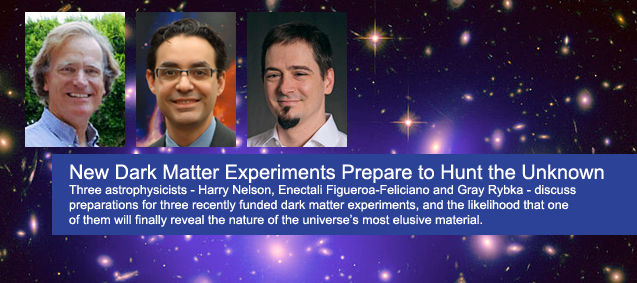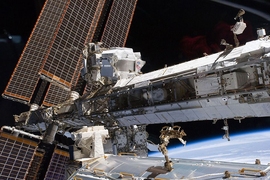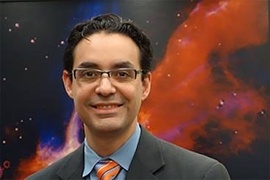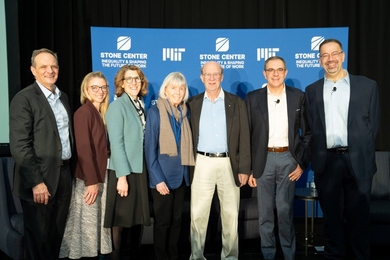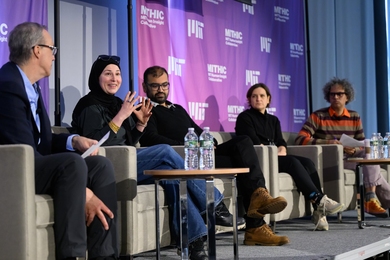This month, three new experiments take significant steps in the hunt for dark matter, the elusive substance that appears to make up more than a quarter of the universe, but interacts very rarely with the matter that makes up our world. The experiments — the Axion Dark Matter eXperiment, the LZ Dark Matter Experiment, and the Super Cryogenic Dark Matter Search at the underground science laboratory known as SNOLAB — learned in July that each would receive much-needed funding from the U.S. Department of Energy and the U.S. National Science Foundation. Each of these “second-generation” experiments will be at least 10 times as sensitive as today’s dark-matter detectors, increasing the likelihood that they will see the small, rare interactions between dark matter and the regular matter we all interact with every day.
Three astrophysicists — Enectali Figueroa-Feliciano of the MIT Kavli Institute and the MIT Department of Physics; Harry Nelson of the University of California at Santa Barbara; and Gray Rybka of the University of Washington — recently discussed preparations for the newly funded dark-matter experiments, and the likelihood that one of them will strike gold. As the experimental plans start to coalesce and detector equipment starts to arrive for ADMX Gen2, LZ, and SuperCDMS SNOLAB, the scientists presented their views on whether these projects will at long last discover dark matter. The interview, conducted by the Kavli Foundation, can be found on the Kavli website.
In support of the recent funding opportunities, Figueroa-Feliciano, Nelson, and Rybka will also answer questions about the next generation of dark matter experiments in a live Google Hangout on Nov. 20 from 12:00-12:30 p.m. Members of the public may submit questions ahead of and during the webcast by emailing info@kavlifoundation.org or by using the hashtag #KavliLive on Twitter or Google Plus.
